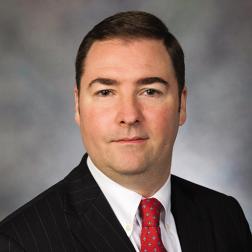The First Latin American Pope: A Church Looking Toward Its Future

Table of Contents
Author(s)
The election of Argentine Cardinal Jorge Bergoglio as pope underscores the growing importance of Latin America for the Roman Catholic Church. At a time when the church is beset by scandals, ranging from sexual abuse by priests to the mismanagement of the Vatican’s finances, the election of Pope Francis provides a breath of fresh air with the potential to significantly improve public opinion of the church, especially in the Americas.
Latin America accounts for over 40 percent of the world’s Catholics. With Canada and the United States — where Hispanics account for one-third of the Catholic population — added to the mix, the Western Hemisphere contains almost one-half of the Catholic faithful, including the three countries with the largest Catholic populations — Brazil, Mexico and the United States — as well as two additional countries in the global top 10 (Colombia and Argentina). It is today clearer than ever that the church’s future lies far more in the “New World” Americas than in “Old World” Europe.
Approximately 70 percent of Latin American adults profess to be Catholics. However, the proportion of Latin Americans who are Catholic has declined over the past few decades, with, for instance, the percentage of Brazilians, Colombians and Argentines who self-identify as Catholic falling by more than 10 points over the past 15 years. This decline has been accompanied by the growth of evangelical Protestantism throughout Latin America. Today, more than a quarter of adults in the Central American countries of El Salvador, Guatemala, Honduras and Nicaragua are evangelical Protestants. With his privileged understanding of Latin America, Francis is uniquely qualified to lead church efforts to reverse this loss of members.
During his time as a bishop, archbishop and cardinal in Argentina, Francis developed a reputation as a humble and austere leader who is profoundly devoted to social justice. He is well known for his efforts in Argentina’s squatter settlements, where he actively supported priests and lay workers in their efforts to alleviate poverty, evict drug dealers and combat human trafficking. In a country where the church hierarchy often is considered to be aligned with the economic and social elite, Francis is widely viewed as a “man of the people.” These traits are only amplified by the fact that Francis is a Jesuit (the first Jesuit pope), an order whose commitment to the poor and pragmatic approaches to resolving pressing social issues are unsurpassed within the church.
Some on the ideological left in Argentina have attempted to impugn the pope’s character by suggesting he collaborated with the brutal military dictatorship that governed Argentina between 1976 and 1983, or at the least did not oppose it with sufficient zeal. Argentine human rights activists with impeccable credentials have attested that these critiques are without merit. They note that not only is there no evidence of collaboration, but to the contrary, the pope actively lobbied the military junta on behalf of detained priests and helped many people flee the country who were targeted by the regime.
The election of the first Latin American pope signals a new era for the Catholic Church, one in which its Latin American and U.S. Hispanic members will play an increasingly prominent role as the locus of political power in the church shifts to the Americas. Francis brings to the papacy a “common touch” and heightened level of social awareness that will serve him well as he endeavors to restore the Catholic Church’s tarnished image and diminished popularity.
Mark P. Jones is the Baker Institute’s fellow in political science as well as the Joseph D. Jamail Chair in Latin American Studies and chair of the Department of Political Science at Rice University.
This material may be quoted or reproduced without prior permission, provided appropriate credit is given to the author and Rice University’s Baker Institute for Public Policy. The views expressed herein are those of the individual author(s), and do not necessarily represent the views of Rice University’s Baker Institute for Public Policy.


